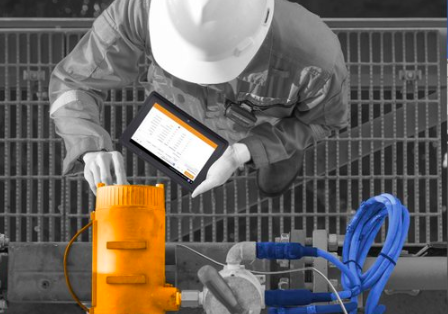
Pervasive Workforce Mobilization in Any Environment
[Image by Arnlea Systems Ltd.]
Workforce Mobility in Hazardous Locations
Many industries have adopted mobile device policies that keep personnel constantly connected, and the mobility trend is on the rise. A recent study commissioned by Panasonic found that the use of ruggedized mobile devices including tablets, laptops and handhelds is increasing, with 40% of respondents planning to purchase these types of devices in the subsequent 12 months. 1
However, organizations that operate hazardous areas prone to explosion have not been able to supply their entire workforces with mobility because typical rugged devices could cause an explosion in combustible environments. Without some type of computer on the job, workers in potentially combustible areas have remained disconnected from real-time communications and data management.
Now, with the emergence of certified “intrinsically safe” devices, a hazardous operation’s entire workforce – even critical workers in the most restrictive areas – can be mobilized. Rather than hazardous area personnel completing their work with pencil and paper and then connecting to digital systems later, they too can work more efficiently inside of hazardous zones by using certified, cloud-connected devices such as the aegex10 Intrinsically Safe Tablet.
Enabling all personnel to use newer technologies may not be as easy as it seems, however. Many oil and gas industry veterans are ready for retirement, and hiring rates have not recouped. Hiring freezes in the 1980s and 1990s created a gap in the workforce, with most engineers either older than 57 or younger than 37. By 2025, Baby Boomers will make up only 7 percent of the oil and gas workforce, creating a shortage of between 10,000 and 40,000 workers.2
Following this “Great Crew Change,” the oil and gas industry has seen a shift in workforce demographics over the past decade toward younger and more tech-savvy personnel; thus, broader workforce mobilization conceptually has become more feasible. While challenges remain for pervasive adoption of mobile technologies, the younger workforces in hazardous area operations are generally becoming more amenable to using new technologies for training and to help them perform their jobs more efficiently. 3
Employees working in hazardous industries, like oil and gas, if properly trained, could readily adopt digital technologies that would make their lives easier and safer. If all personnel had intrinsically safe mobile devices, for example, they could be connected in real time to complete reports, access documentation, consult experts, communicate with team members, plus send and receive critical and even life-saving information about asset integrity and environment health and safety (EHS) warnings. Performing all of these functions in exponentially less time than without mobility solutions would mean dramatic cost savings for organizations, plus improved safety and productivity.
Giving hazardous area workforces the gift of mobility with intrinsically safe devices is a first step in mobilizing entire operations to make them more efficient, safe and productive. While the adoption of these new technologies may not be as simple as just handing personnel devices, the benefits of retraining and connecting everyone far exceed the challenges of implementation.
Join Aegex Technologies on Wednesday, March 27, at 12:00 EDT for a deeper dive into overcoming implementation challenges for pervasive workforce mobilization during our webinar, “How to Leverage Digital Technologies in Your HazLoc.” Register today: https://attendee.gotowebinar.com/register/5265273510686611714
1 “The Rise of Digitalization and Rugged Devices in Oil and Gas”, research by Zpryme via Panasonic Inc.
2 https://www.accenture.com/t20170630T025458__w__/us-en/_acnmedia/PDF-55/Accenture-Strategy-Talent-Well-Oil-Gas.pdf
3 https://www.spe.org/en/jpt/jpt-article-detail/?art=3062
